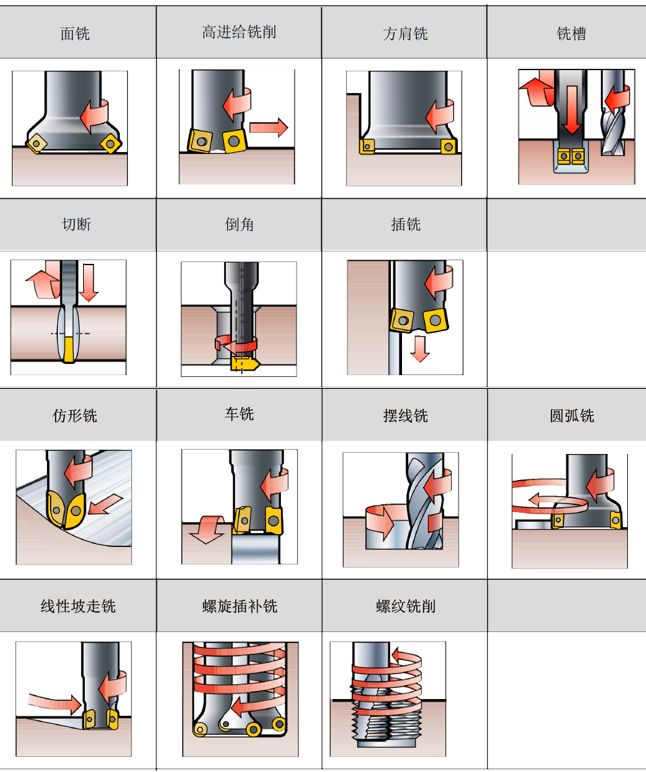In the actual production of milling processing, there are many application skills including machine tool setting, workpiece clamping, tool selection, etc. This issue briefly summarizes 17 key points of milling processing. Each key point is worth your in-depth mastery.
Xinfa CNC tools have the characteristics of good quality and low price. For details, please visit: CNC Tools Manufacturers – China CNC Tools Factory & Suppliers (xinfatools.com)
1. Power Capacity
Check the power capacity and machine rigidity to ensure the machine can handle the required cutter diameter.
2. Workpiece Stability
Workpiece clamping conditions and considerations.
3. Overhang
Keep the tool overhang on the spindle as short as possible when machining.
4. Select the Correct Cutter Pitch
Use the correct cutter pitch for the operation to ensure that there is not too much insert engagement in the cut, which would cause vibration.
5. Cutting Engagement
Ensure adequate insert engagement when milling narrow workpieces or when there are gaps.
6. Insert Geometry Selection
Use positive geometry indexable inserts whenever possible to ensure smooth cutting action and minimum power consumption.
7. Use the Correct Feed
Ensure the correct feed for the insert used to achieve the correct cutting action by using the maximum recommended chip thickness.
8. Cutting Direction
Use down milling whenever possible.
9. Part Considerations
Workpiece material and configuration, and the quality requirements of the surface to be machined.
10. Insert Grade Selection
Select geometry and grade based on workpiece material type and application type.
11. Damped Milling Cutter
For longer overhangs, more than 4 times the tool diameter, the tendency to vibrate becomes more pronounced and using a damped tool can significantly increase productivity.
12. Enter Angle
Select the most appropriate enter angle.
13. Cutter Diameter
Select the correct diameter based on workpiece width.
14. Cutter Position
Position the milling cutter correctly.
15. Cutter Entry and Exit
As can be seen, with the arc entry, the chip thickness is always zero when exiting, allowing for higher feeds and longer tool life.
16. Coolant
Apply coolant only when deemed necessary. Milling is generally better performed without coolant.
17. Maintenance
Follow tool maintenance recommendations and monitor tool wear.
Post time: Jul-20-2024




